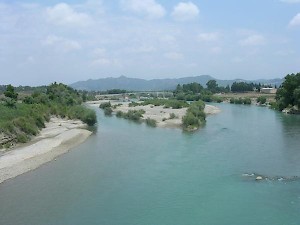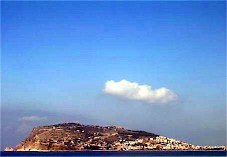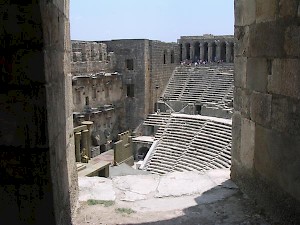Pamphylia
Q585250Pamphylia: ancient name for the fertile coastal plain in southern Turkey.

Pamphylia is the ancient name of the rich and fertile alluvial plain of the rivers Kestros, Eurymedon, and Melas (the modern Aksu Çayi, Köprü Çayi, and Manavgat Çayi). In the south, we find the Mediterranean sea - the Gulf of Antalya to be more precise. To the west, the Pamphylian city Attalia (Antalya) faced Lycia; to the north were the pine forests of Pisidia, and to the east, Coracesium faced "rough" Cilicia. All these countries were dominated by the Taurus mountain range. Between the Taurus and the Mediterranean, the alluvial plain is dominated by fertile terraces and the white chalk faces of the foothills.
The name "Pamphylia" is very ancient, but because the language of the Pamphylians is hardly known (although it is closely related to Greek), we cannot interpret the name. When the Rhodian Greeks entered the region in the seventh century BCE, they thought that the nation with the related language was called pam-phylos "all tribes", which may be erroneous or may be true.
Pamphylia belonged to the ancient Hittite Empire. The main towns were Estwediiys (later known as Aspendus) and Side. After the demise of the Hittite Empire after 1200 BCE, Pamphylia was the center of a new, Neo-Hittite kingdom called Tarhuntassa. It was later claimed that Greeks settled in the region in the twelfth century, and although these stories were probably invented to explain the linguistic similarities between Greek and Pamphylian, there may be some truth in them, because the Mycenaean Greeks are known to have migrated eastward to Cyprus. (However, there is no archaeological evidence for a Greek invasion.) It is not known how long Tarhuntassa existed; when the Rhodians entered the region, it was already called Pamphylia and we do not know how this change came to be.
However this may be, it is certain that from the seventh century on, the Pamphylians traded with the Greeks. Ports like Perge and Side became large cities, and rich Pamphylia became a natural target for foreign enemies. The first to conquer the coastal towns were the Lydians. It is not known who was responsible for the conquest, but it is certain that it belonged to the possessions of king Croesus (c.560-c.547), who lost it to the Persian conqueror Cyrus the Great. According to the fifth-century Greek researcher Herodotus of Halicarnassus, Pamphylia belonged to the first tax district of the Achaemenid Empire, together with Lycia, Magnesia, Ionia, Aeolia, Milya, and Caria.note
Although Pamphylia now belonged to Persia, Greek cultural influence was still felt. After all, the trade contacts remained important. In 468-465 (the exact year is not known), the Athenian admiral Cimon defeated the Persians at the mouth of the Eurymedon, after which Pamphylia became part of the Athenian empire. Forty years later, the Persians reoccupied their former possession.
In the first weeks of 333, the Macedonian king Alexander the Great occupied the Pamphylian coast. He left his personal friend Nearchus in charge of the country, which he organized thoroughly: it never revolted to its new Macedonian masters. In the years after Alexander's death, it was first part of the empire of Antigonus Monophthalmus, but in the third century, the Ptolemies ruled the country, succeeded by the Seleucids - two Macedonian dynasties. Side and Perge continued to flourish; new important cities were Sillyum and Aspendus.

When the Romans defeated the Seleucid king Antiochus III the Great, they ordered him to give up Pamphylia, which was given to Rome's ally Pergamon (188). The new rulers founded Attalia in 150, and seem to have given special attention to the production of olive oil. However, because of the decline of the Seleucid empire, the region was politically unstable and the eastern town Coracesium became the capital of the Cilician pirates. After 100, the Romans started to intervene. At first, they were not very successful, but in 77 Publius Servilius Vatia gained some remarkable successes: he defeated the pirates at sea and cleared Lycia and Pamphylia. Later, general Pompey conquered Cilicia proper.

Pamphylia was first part of a province called Cilicia; in 43 BCE it was added to Asia; twelve years later, general Octavian (the future emperor Augustus) made it part of Galatia; the emperor Vespasiancreated a new province called Lycia and Pamphylia (after 70). In 314 or 325, this double province was divided, and Pamphylia was a province of its own.
The Roman period was one of great economic and cultural flourishing. Most archaeological remains that can be visited today in towns like Aspendus and Side, date back to Roman times.